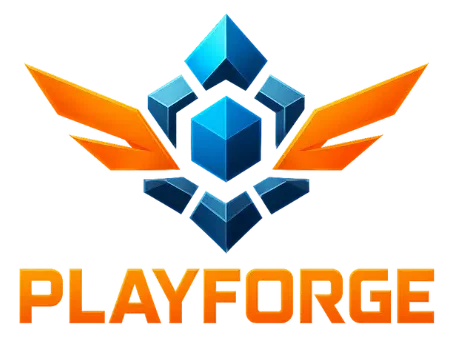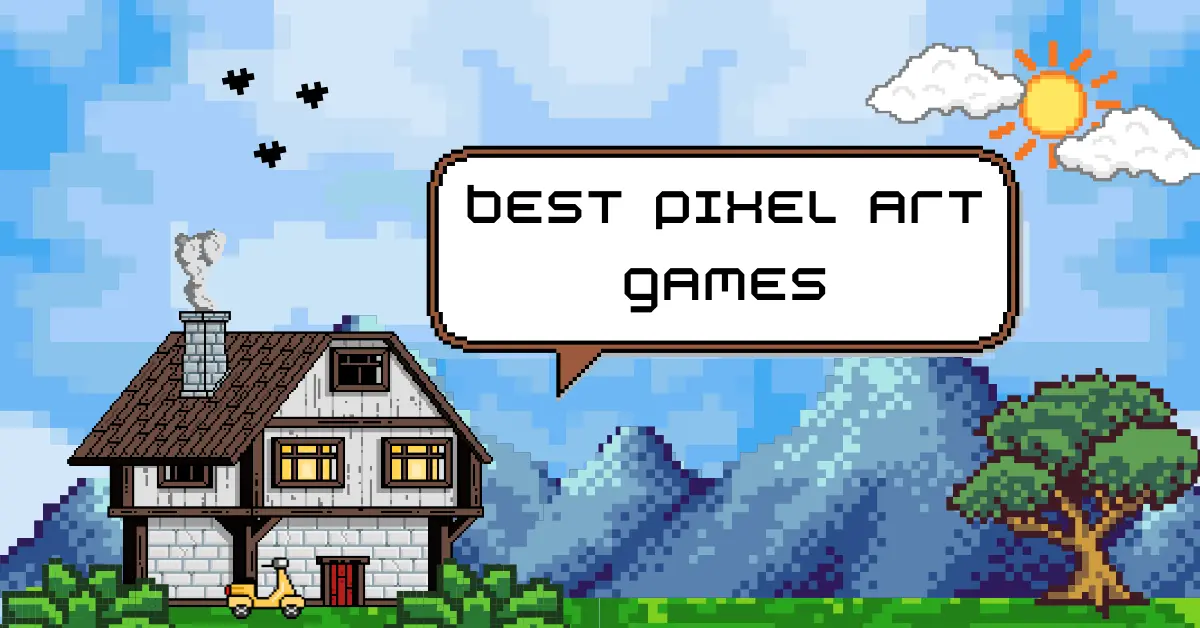Pixel art games used to be a necessary evil, but now they’re a style of its own, and quite popular too. To be honest, I wasn’t a big fan when this trend took off. It might be “vintage” to some people, but it transported me back to barely working consoles or TV games. In my mind, it was a regression from beautiful, life-like blockbusters.
But they grew on me, I have to say. They’re much better than they used to be when I was a kid, so I can get that sense of nostalgia and good old times without any of the frustrations that existed then.
And right now, there are some truly fantastic pixel art games out there with great stories and in all sorts of genres. Plus, they’re usually very cozy and relaxing, and my gaming motion sickness doesn’t act up with them. Check out my favorites!
🎮 What are Pixel Art Games? Pixel art games use deliberately low-res graphics to create a retro or stylized look, often calling back to the 8-bit and 16-bit eras. But don’t let the simplicity fool you — many of these games are packed with depth, creativity, and emotional storytelling.
Last updated on:
Hyper Light Drifter
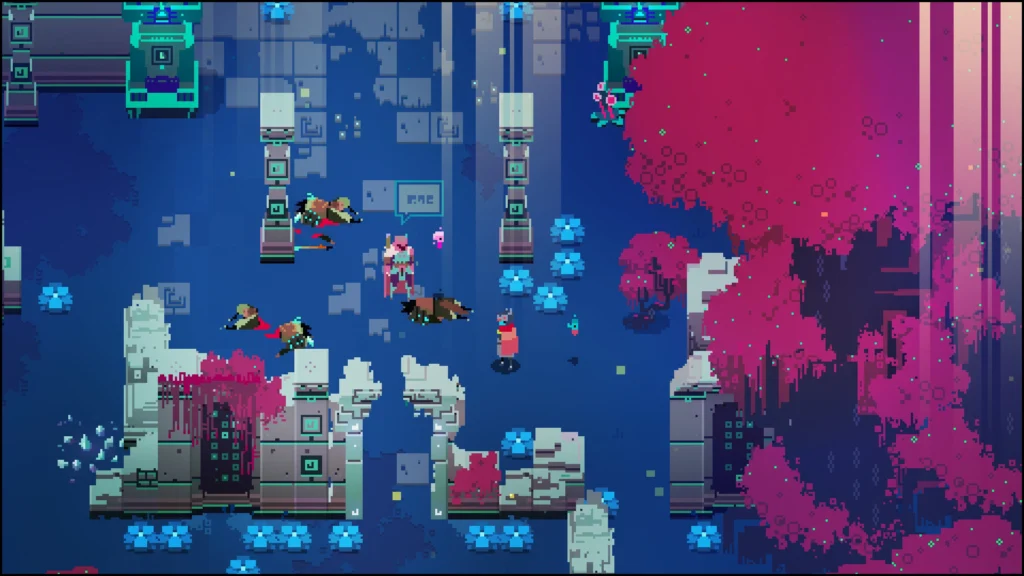
Hyper Light Drifter is an action game set in a post-apocalyptic world. You play as a cloaked traveler suffering from a vague illness, searching for answers.
The gameplay is fast and sharp: dashing, slashing, and shooting through tight combat encounters. There’s no dialogue or text, just environmental storytelling and haunting music guiding you as you explore. It can be tough at times, but it’s more about rhythm and precision than brute force.
Visually, the game is stunning. Its pixel art is vivid and intricate, drenched in neon and shadow. Every area feels crafted with care, like a memory of a place you’ve never been. It’s quiet, cryptic, and emotional—an experience that sticks with you more for how it feels than what it says
Terraria
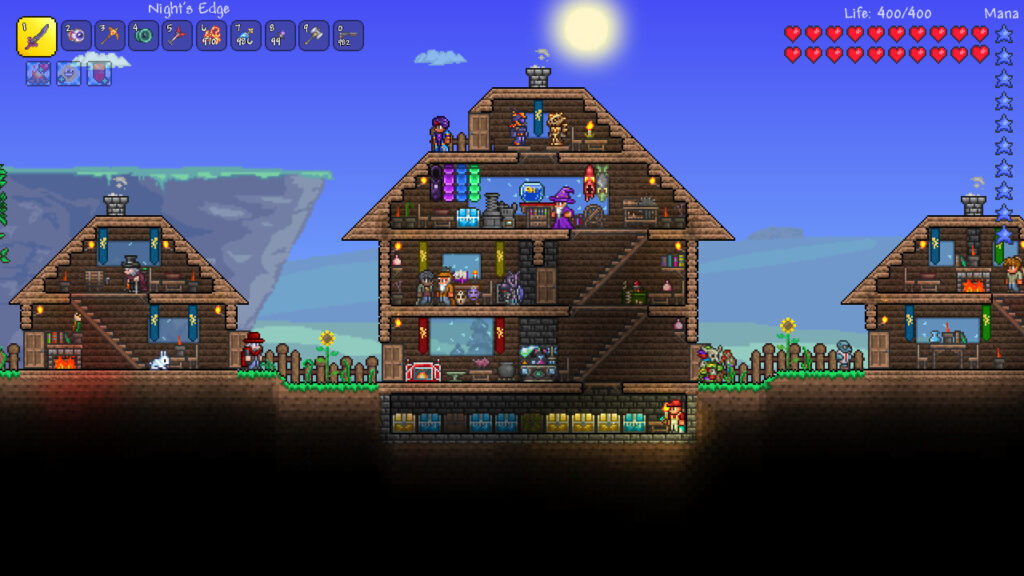
Terraria is a 2D sandbox adventure where you drop into a randomly generated world, start with almost nothing, and slowly build your way up through crafting, exploring, and fighting your way past enemies and bosses.
The gameplay is really open-ended. You can mine for rare ores, craft armor and weapons, build elaborate bases, and tackle boss fights that unlock new content. It’s easy to get pulled into a rhythm and it becomes almost addictive.
The pixel art style is colorful and classic. Each biome has its own unique look and vibe — deserts, jungles, floating islands, glowing mushroom caves, and so on.
Graveyard Keeper
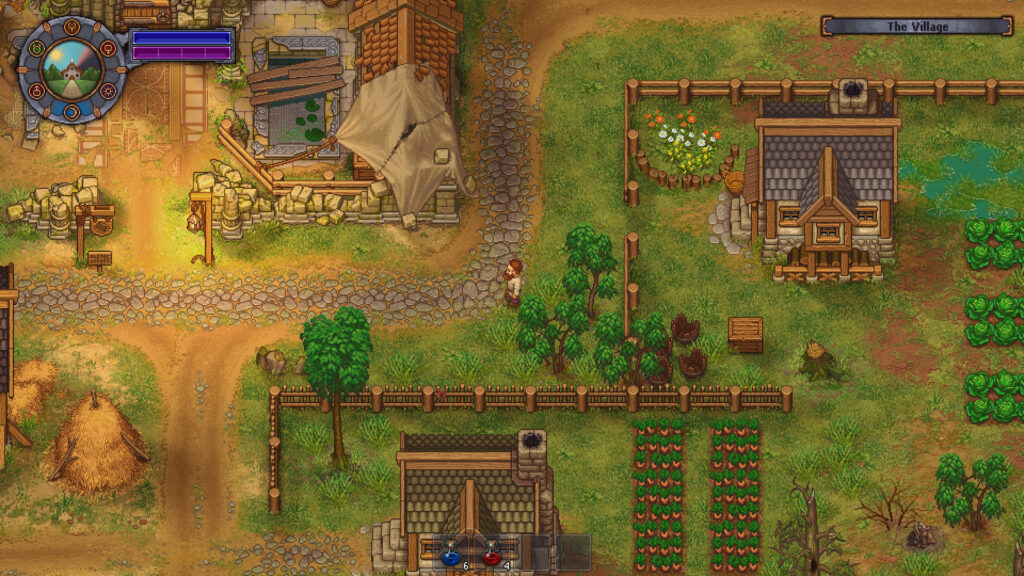
If you want a management sim that feels fresh and new, this is it. You play as a modern-day character who gets the keys to a rundown graveyard. From there, you’re in charge of maintaining the grounds, burying bodies, crafting headstones, and slowly expanding your role into everything from farming and potion brewing to some perhaps darker things.
You’ll gather resources, unlock tech trees, and build up your little corner of the world. And while the pace can be slow at times, there’s always a new goal just a little further down the road to keep you going.
The pixel art in Graveyard Keeper is moody to fit the morbid tone, but it’s also incredibly detailed and often colorful.
Dead Cells
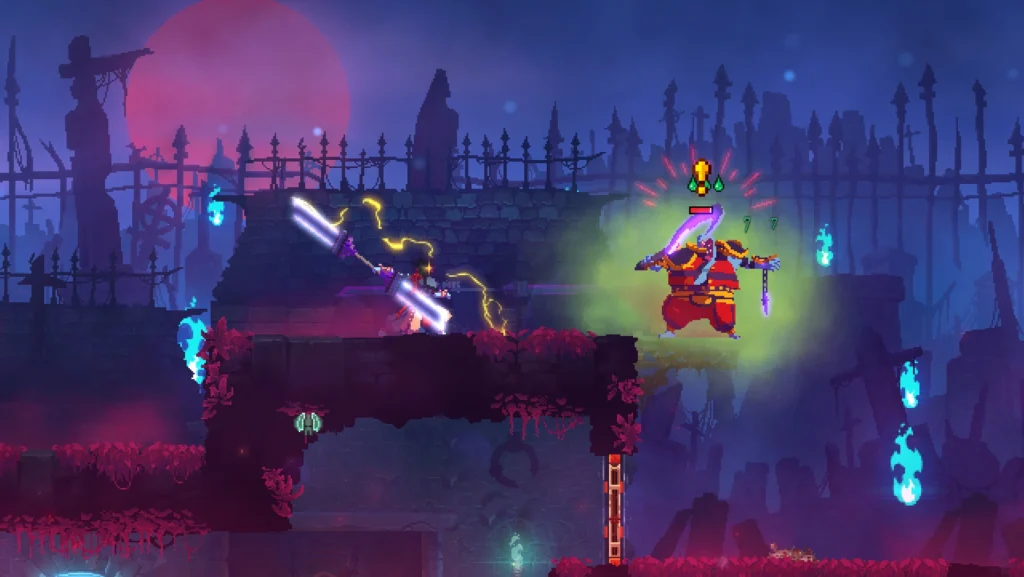
Dead Cells goes for a bold, detailed pixel art style that doesn’t waste space. Characters, enemies, even background animations are crisp and purposeful. There’s no clutter, no over-stylizing, just clean visuals that support fast-paced action without getting in the way.
What stands out most is how smooth everything feels. Animations are tight, responsive, and easy to read, which matters a lot in a game that moves this fast.
Visually, each biome has its own flavor. From moldy sewers to glowing clock towers, the environments shift in color and tone without losing the game’s overall identity. Lighting and particle effects layer in just enough without overpowering the pixels underneath.
Katana ZERO
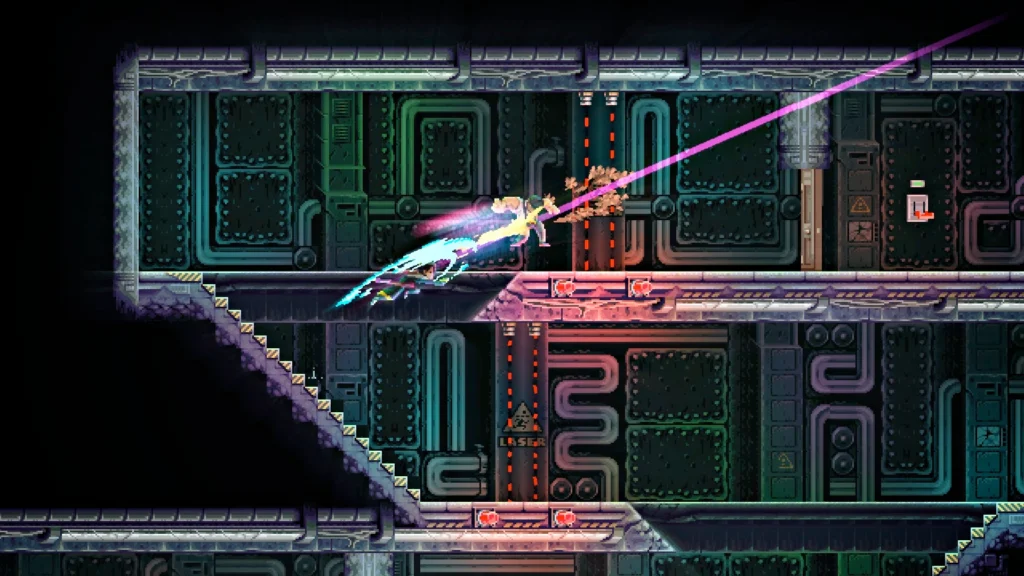
Katana ZERO uses pixel art that’s sharp, clean, and full of motion. The environments are compact but detailed, each room tells you what you need to know at a glance, which matters when every second counts. It’s designed around speed, and the art keeps up without distracting you.
Character animations are a big part of what makes the game work. Slashes, dodges, and slow-mo kills all feel smooth and readable. There’s a rhythm to how the game moves, and the pixel art supports that without getting in the way. It’s stylish, but not messy.
Stardew Valley
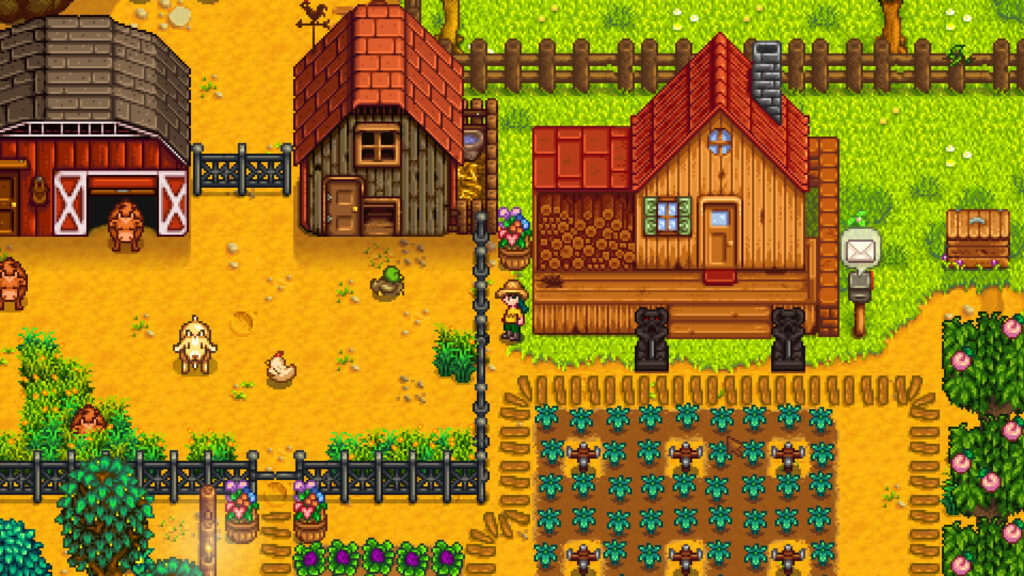
You’ve heard of Stardew Valley before, right? It might be one of the most popular pixel art games and for a good reason — it’s charming, cozy, and with a good amount of action (romantic and otherwise).
In case you haven’t seen it before, Stardew Valley is a life sim where you inherit a farm in a small town and you need to restore it. At first, you just plant things and chill on your farm, but then the world expands and you get to meet the characters from the town, make friends, even enter romantic relationships with them. Plus, you can fish, mine, craft things, raise animals, fight monsters in caves and so much more.
So, no matter what kind of game you feel like playing, Stardew Valley probably has it all. And you’re free to play it however you want.
Visually, it’s very colorful and warm. The color palette changes with the seasons and every area is very beautifully designed.
See more games like Stardew Valley here.
Celeste
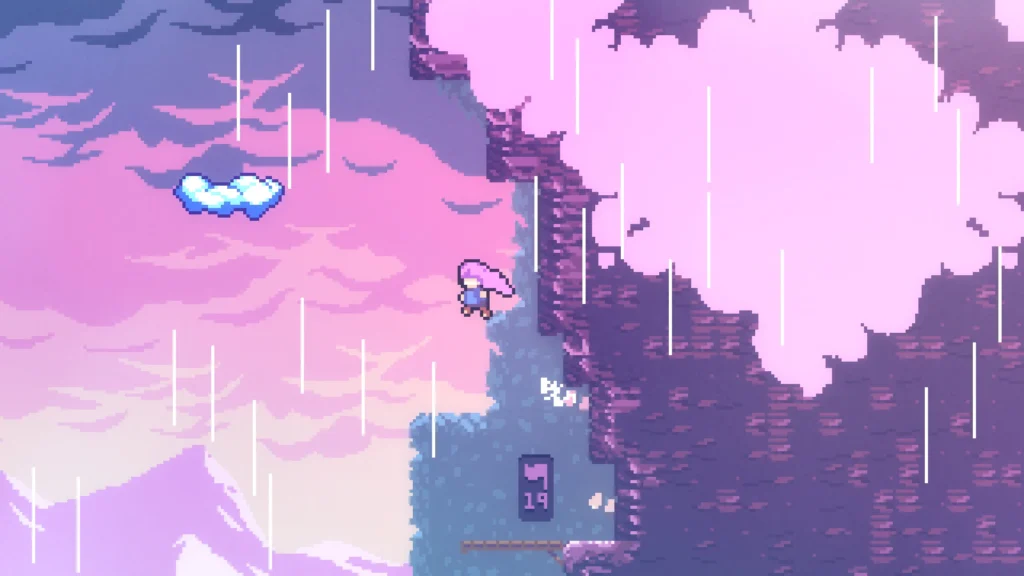
Celeste keeps its pixel art clean and minimal, but every bit of it is intentional. Characters are small and expressive, environments are clear, and the visuals never get in the way of gameplay.
Each level has its own look without breaking the game’s overall tone. Color palettes shift to match the mood, cold blues in snowy peaks, warmer tones deeper into the mountain and the lighting changes just enough to keep things feeling fresh.
What makes it work is how readable everything is. Platforms, hazards, and interactable objects are always clear. Nothing blends in or confuses you, even when the levels get tricky. And while it’s not packed with flashy effects, there’s still movement in the backgrounds, weather details, and small animations that give the game life.
Eastward
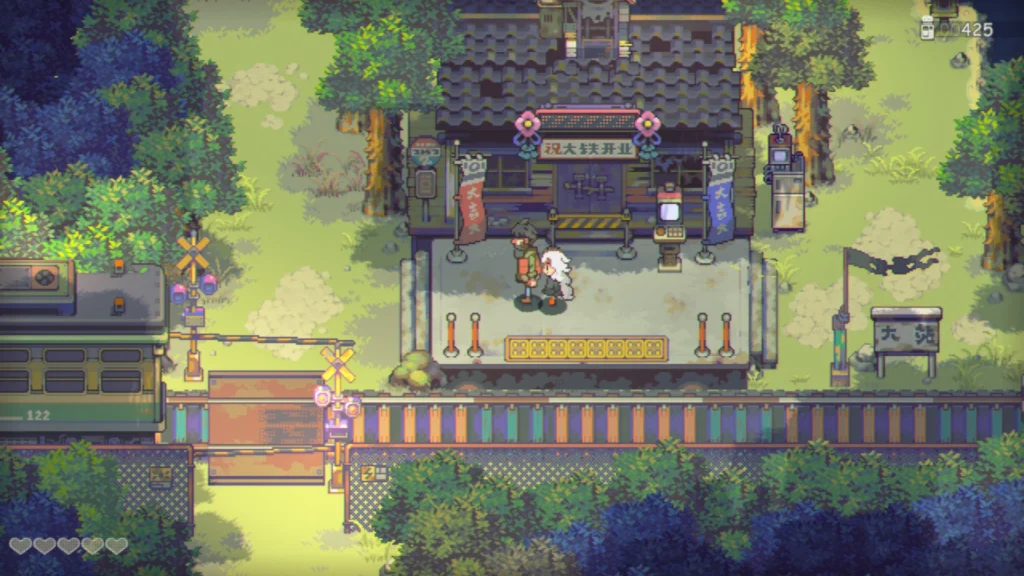
Eastward goes all-in on detailed pixel art. Characters, objects, and environments are dense with color and texture. It feels almost like a modern cartoon filtered through old-school visuals.
There’s a lot on screen, but it’s layered smartly, foreground and background elements are separated clearly, so the detail never becomes noise. Animations are smooth and add personality without being distracting. If you’re into rich environments and expressive pixels, this one stands out.
A Short Hike
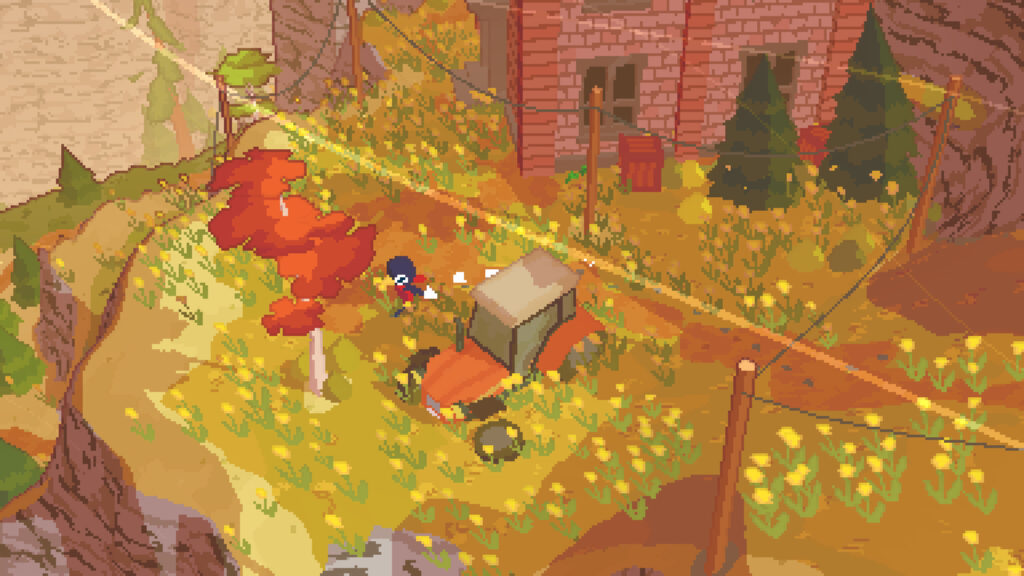
A Short Hike is a small game that leaves a big impression. It’s a relaxed, open-ended adventure filled with exploration, light platforming, and charm.
The gameplay is simple — run, glide, climb, and explore. You can fish and dig up treasures, but there’s no combat or anything really stressful. You choose your own path and see where it takes you.
The art style is soft, colorful but not overwhelming, and sort of chunky. It won’t take you too much time to complete it, but you’ll enjoy every minute of playing it.
Octopath Traveler
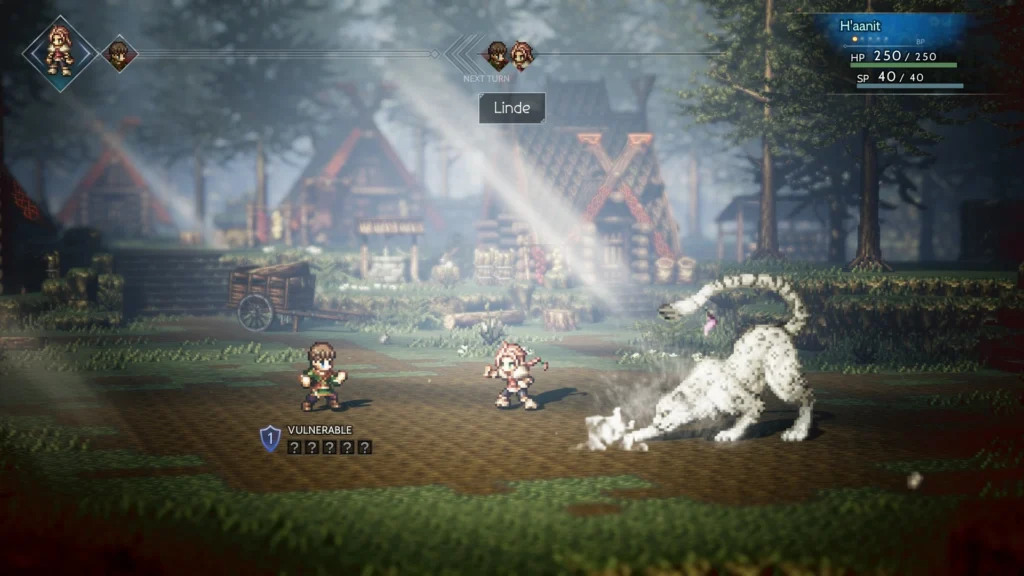
This one’s a blend: pixel characters on top of 3D environments with lighting effects that give it a distinct look.
The characters themselves are classic sprites, simple, clean, and animated well but the real draw is how those sprites sit in a world with depth, shadows, and atmospheric effects. It’s a hybrid approach that works, giving a traditional style a modern twist without losing that retro charm. Plus, it’s one of the best JRPGs out there.
Undertale
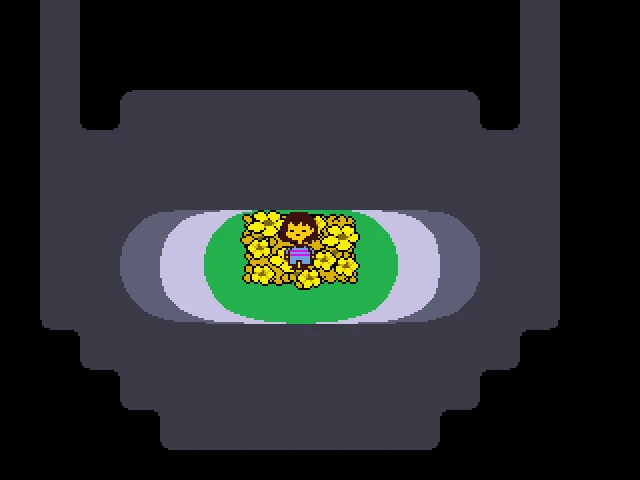
Undertale goes extremely minimal with its pixel art, but it works because of how focused it is. Characters are simple but iconic. Environments are bare-bones, yet every asset feels like it belongs.
The lack of visual polish is part of the tone, it’s not trying to impress with graphics, but rather with personality. And it delivers. It’s a good example of how strong design doesn’t need detail, just intent.
Spirittea
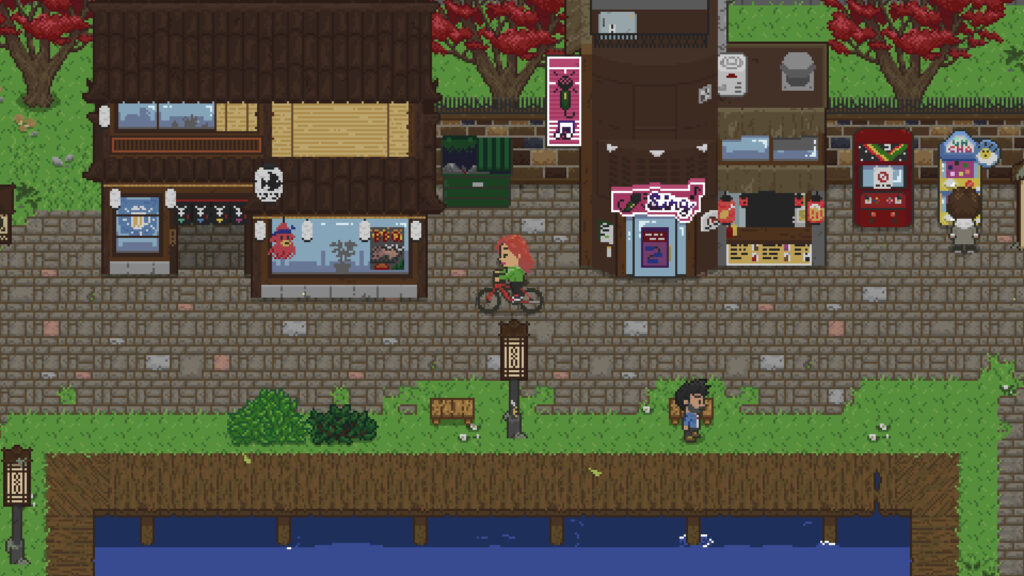
Spirittea is a life sim where you manage a bathhouse for spirits. It’s much like Stardew Valley, so you can build relationships, manage resources, and do a bunch of other things. It’s one of those perfectly cozy and sweet games.
Your job is to attract and serve spirits and maintain your bathhouse. Plus, you can explore the town, meet the locals and find out secrets of the spirit world.
The pixel art of Spirittea is really detailed and charming, with a really nice soundtrack, which completes the experience.
Shovel Knight
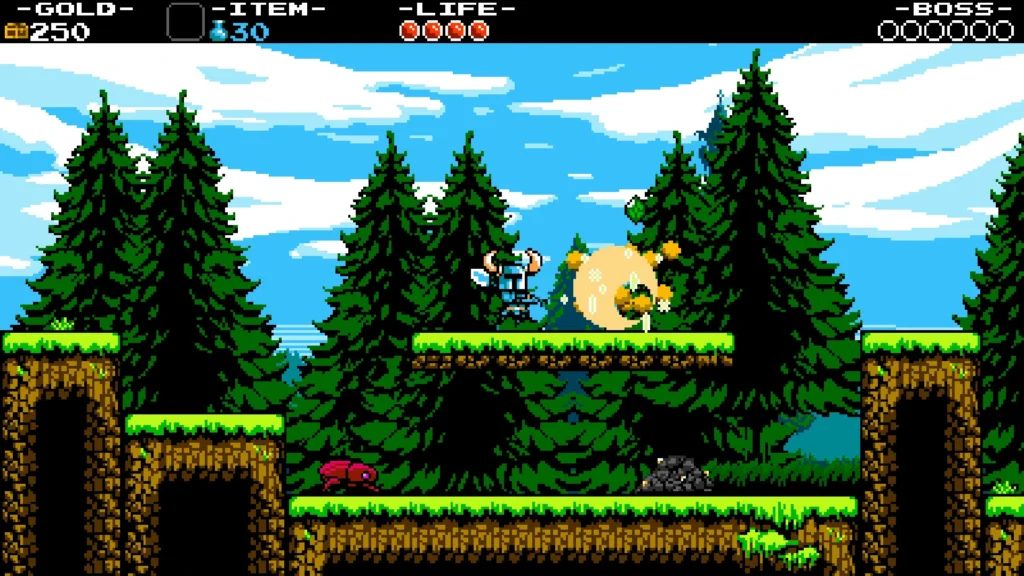
Shovel Knight stays true to NES-era visuals but sharpens everything up. The sprite work is clear and consistent, colors pop, and the animations feel smooth without being overly complicated. It’s limited in palette and resolution on purpose, and that limitation is used well. The UI, enemy design, and stage visuals all look authentic, but with just enough polish to feel modern. It’s a strong reminder of how good “retro” can look when it’s actually well-designed.
FEZ
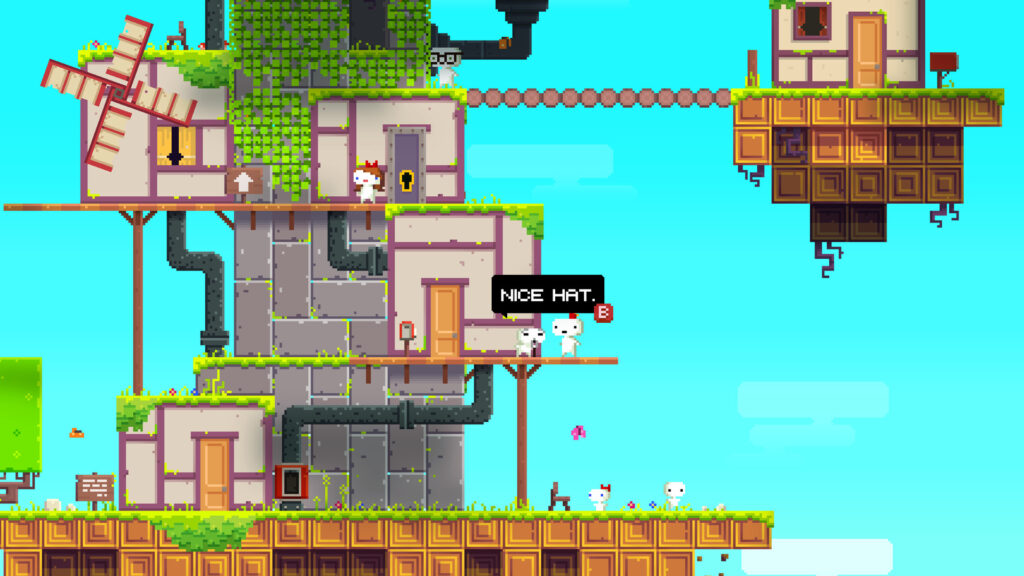
FEZ is a puzzle-platformer that introduces a unique mechanic: rotating the 2D world to reveal different perspectives. You play as Gomez, exploring a vibrant world filled with secrets and challenges.
Gameplay revolves around navigating the environment by shifting perspectives, solving puzzles, and collecting cubes to unlock new areas. FEZ is colorful and charming, with a great soundtrack and relaxing but challenging mechanics that could keep you entertained for a while.
Blasphemous
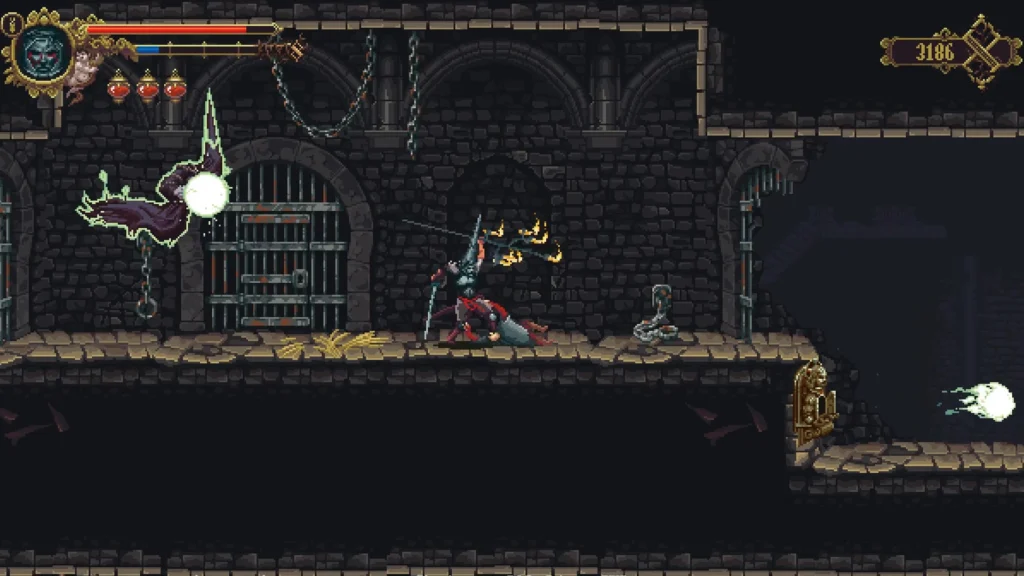
Blasphemous uses pixel art to push tone and atmosphere hard. The environments are packed with dark, heavy detail, twisted statues, bloodstained ruins, and backgrounds that feel oppressive without being messy. Character sprites are sharp, with smooth attack animations and dramatic movement. It’s not flashy, it’s intense. The whole game leans into a visual style that matches its brutal tone, and the pixel art carries a lot of that weight.
Axiom Verge
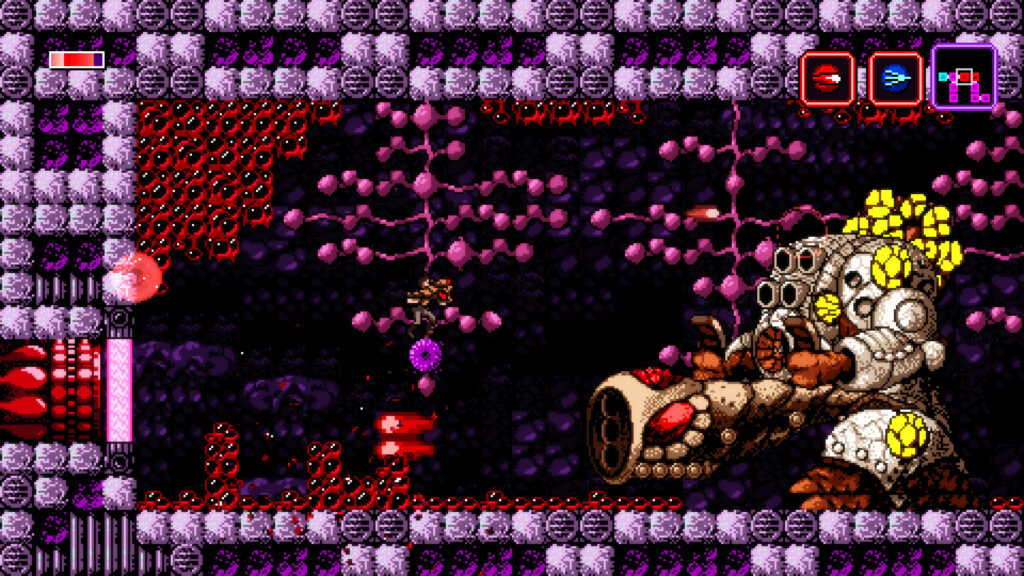
Axiom Verge distinguishes itself within the retro Metroidvania genre through its detailed and atmospheric pixel art. The game creates a unique identity with its unsettling biomechanical environments and strange technology, maintaining visual clarity despite the intentional visual noise.
Character and enemy designs are sharp and well-animated, ensuring they remain easily trackable during fast-paced action. The game strategically incorporates controlled glitch and distortion effects as a core aesthetic element, demonstrating a balance between visual intensity and clarity.
Conclusion
I sincerely hope that you’ve at least found a couple of games on this list that you like. Not only do these games have cool pixel art with retro style but also they also have two major things that should help you make things easier for you.
If we were to completely ignore how fun they are, the first thing is that these games usually cost less than your typical run-of-the-mill game which means you can get three for the price of one.
And second thing is that you don’t have to worry if your PC can handle it, you can even play them on most laptops even. I gave you enough reasons to get one of the games from the list, so go ahead and enjoy.
Pavle is the founder of PlayForge and its lead writer and reviewer, covering PC, PS5, and mobile games, a with a focus on RPGs, MMOs, FPS games, and more. He’s been gaming since the PS2 days and now writes in-depth reviews and guides to help players find their next obsession and get gaming insights from real players, not just critics. His reviews are honest and transparent, but he always tries to stay positive, because in his opinion, almost any game can be fun if you look at it the right way.
In his free time, he likes to (obviously) play more games, spend time with his family, theorycraft about various media with his wife, and watch anime. So yes, he’s a complete nerd, even if he’ll never admit it.
